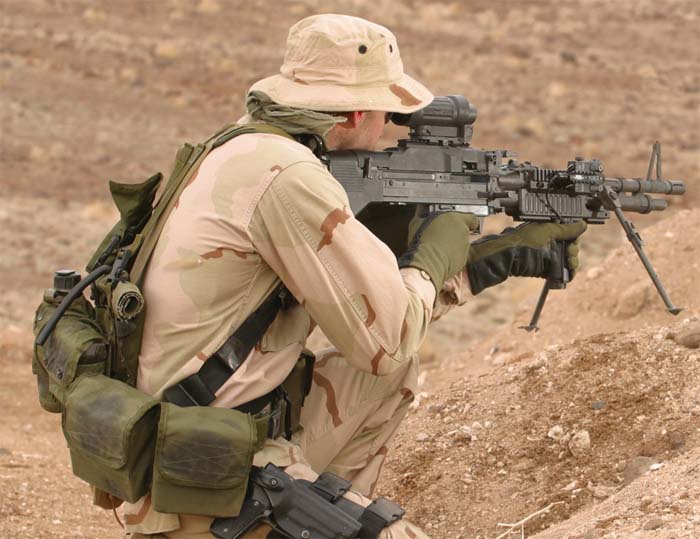
(Editor’s note: Special Tactical Services, McClellan and Renz’ highly respected tactical training and resources firm, is an important partner of US Ordnance, current manufacturer of the substantially improved M60 series machine guns and spare parts. Both companies have long been fighting a determined retrograde action in support of US military personnel and other users of thousands of these battle proven guns that are still deployed worldwide in the Global War on Terror. This interview was originally conducted to provide background information for Robert Bruce’s report on US Ordnance’s MK43 series machine guns, featured in the April 2008 issue of SAR. Because of its remarkably candid and necessarily controversial elements, SAR believes it deserves to run on its own, providing much information that is both relevant for today and important for the historical record.)
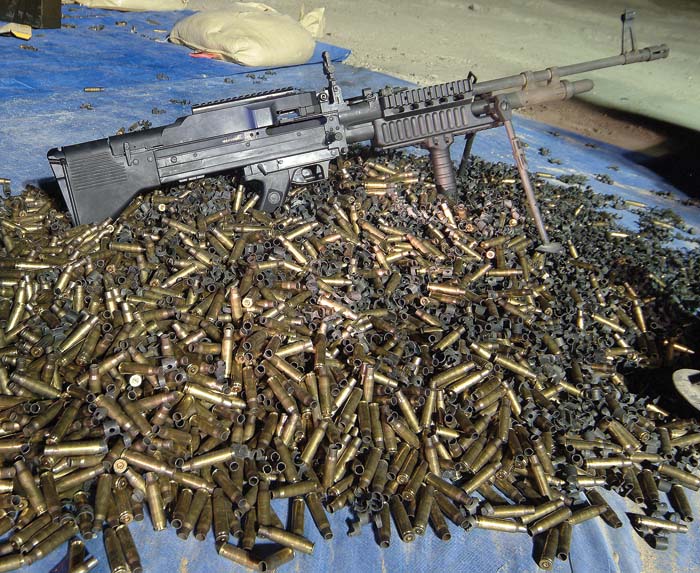
Special Tactical Services, LLC, established in 2000 by former Navy SEAL Dale McClellan, offers highly effective tactical training in a variety of weapons and antiterror/security disciplines that increase the war fighting capabilities of today’s operators in the Global War on Terror and on the front lines of Homeland Security. STS is an officially listed US Government General Services Administration vendor and works for the US Navy and its Center for Security Forces. STS instructors have provided uniquely effective training for numerous federal, local, & state law enforcement agencies as well as elite units in every one of the US Armed Forces.
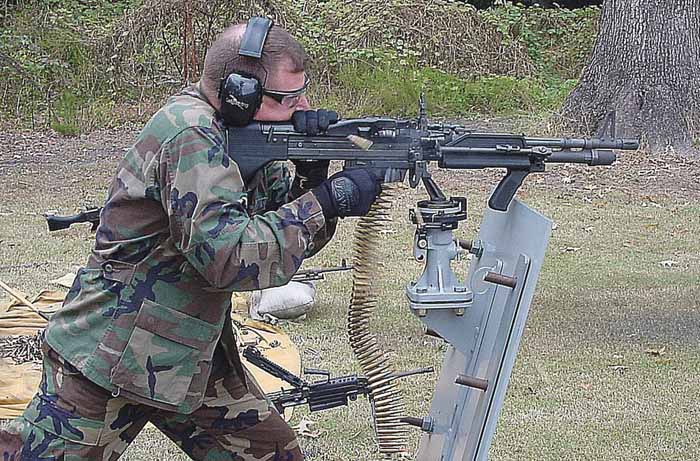
STS is also the exclusive weapons and armorer training partner to US Ordnance, current manufacturer of improved M60 series machine guns. Additionally, STS designs and manufacturers a number of innovative products including advanced Shipboard Ballistic Weapons Stands and Modular Armored Security Shields for Entry Control Points.
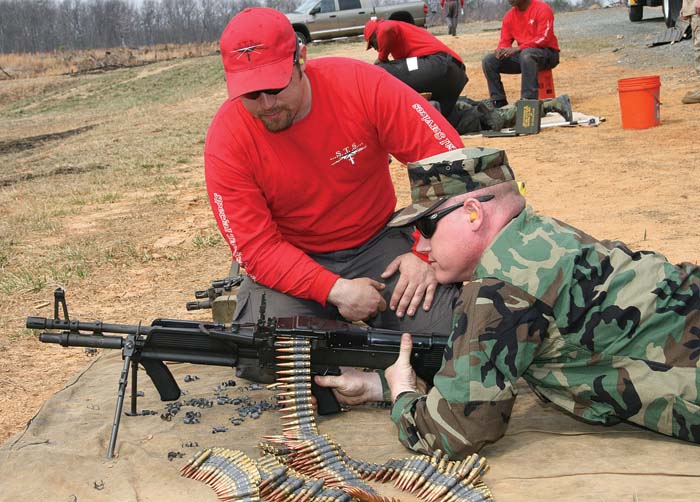
Dale McClellan, President and CEO, has over 16 years of military and private sector experience and is responsible for shaping the future growth and diversification of STS. He graduated from Basic Underwater Demolition SEAL Training in 1990. While serving at SEAL Team Eight he was deployed to Mogadishu, Somalia in 1993. Trained as a Machine Gunner, Point Man, Sniper and Scout Sniper Instructor, McClellan finished his military career training Seal Team members for combat operations as an Assault Cell instructor.
Steve Renz, Senior Vice President, with nearly 20 years of instructional experience in the military, law enforcement and the private sector, is among those responsible for the direction of all activities that Special Tactical Services offers. A six year veteran of the United States Marine Corps, he served as an anti-tank assault man assigned to a Combined Anti-Armor Team, a Scout Sniper and Scout Sniper Instructor, as well as a Close Quarters Battle Instructor. While assigned as a sniper to the Surveillance and Target Acquisition platoon with First Battalion, Eighth Marines, he conducted several deployments to the Mediterranean area and to the Middle East. He later served as a Scout Sniper Instructor at Camp Lejeune, N.C. and went on to assist in the development and implementation of the Marine Corps’ Designated Marksman program. As a CQB Instructor, he was responsible for the training of Marines and other military personnel in all facets of handgun, submachine gun, shotgun and rifle/carbine combat marksmanship as well as all facets of covert and dynamic entries for vital asset recovery.
Special Tactical Services, LLC, Virginia Beach, Virginia
SAR: This interview is intended to gather background information for an in-depth look at the MK43 Mod 1, latest member of the M60 family that the Navy calls a ‘legacy weapon.’ Although officially on their way out, if you go on Navy News website and start pulling down photographs of Inshore Boat Units and others deployed to GWOT, there are a heck of a lot of M60s out there in various configurations.
Dale McClellan: The irony in this (MK43) feature for Small Arms Review is I wish it was done five years ago. Because when we started trying to keep the 60 alive, started performing CPR on it, nobody would listen.
Everyone wants our Soldiers, Airmen, Sailors and Marines to have the best weapons. FN builds the machine guns with the exception of the M2HB. Following the lead of the Marine Corps and the Army, the Navy set the system up where the M240 was to replace the MK43, or the M60 series in its system. Now with the protracted war effort, the armed forces is having a difficult time keeping up with sustainment, and total replacement of the M60 is being pushed out even further.
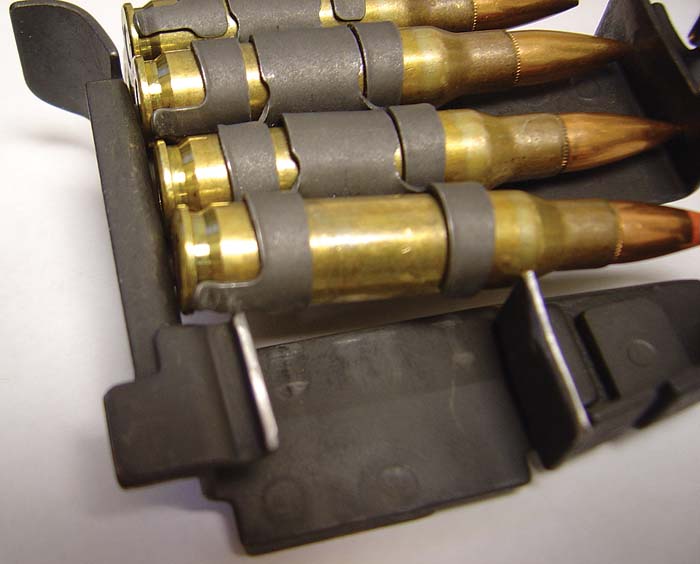
The issue we had is what you just said, detailed in a letter that we wrote and circulated back then, (see “The Battle Proven M60,” linked on the STS website). We wrote this and sent it out to everybody because there are anywhere between five thousand to ten thousand M60s in the Navy’s inventory, still being deployed on Navy ships and with reserve units throughout the world. But the Navy says it’s an ‘unsupported weapon system’ and they sent out emails to the effect that it’s to be replaced by the M240.
Unfortunately, that meant support for the M60, M60E3 and Mk43s was going to be through cannibalization of M60’s currently in inventory. There is a potential problem though with cannibalizing M60s for spare parts. What most people don’t realize is that the feed cam assembly, cartridge guides, and feed pawl assembly on the Mk43 are not interchangeable with older models.
Replacement was not going to be finished for several years to come. And it wouldn’t matter if it was six days or six years, if someone has to employ an M60 weapon system there’s a high probability that it would not operate properly because the systems are 20+ years old and have been maintained with spare parts that were supplied by the lowest bidder; or worse through cannibalization of incompatible used parts.
We did a firing demonstration for Congressman Mark Kirk and he was impressed with the weapon (Mk 43 Mod 1) and our arguments. This led to a news article in the Washington Times, ‘Rummy Asked to Save Rambo’s Favorite Gun.’ (Linked on the STS website). It was taken all the way to Secretary of Defense Rumsfeld. And we tried to get it saved because it was already out there, it was more cost effective, it’s a good American made weapon system. But we lost that battle ultimately and the gun became ‘unsupported.’ The government had made up its mind; the money had already changed hands.
In Crane’s (NAVSEA Crane, the Navy’s central small arms support facility) defense they said these things are decided and planned three to six years out. And there was no turning around the decision on the M60. So the 60 will continue to get phased out and be replaced by the 240, or the MK48 in some capacities. Which makes more sense. And hopefully the Marine Corps and everybody will start to get some type of shorter 240 so they can have a manportable/dismountable configuration.
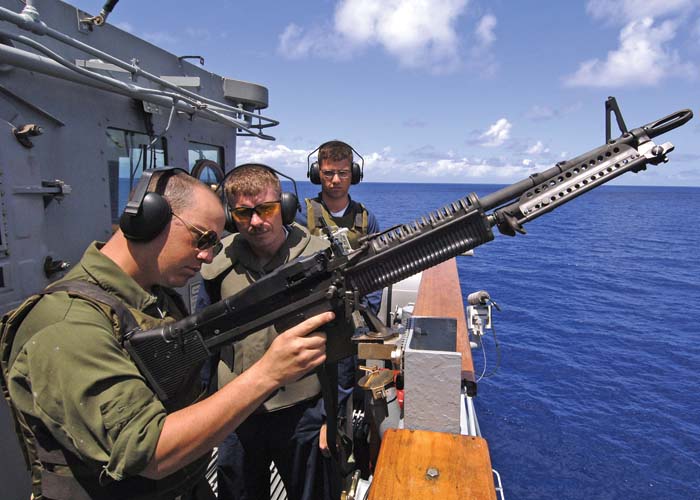
“Unsupported”
SAR: There must be plenty of M60 replacement parts in the inventory.
McClellan: Unfortunately, some of the people at Crane don’t know what they’re sending out. When several Navy Units received their M60s they had Basic parts on a Mk43 with an E3 forearm. I mean it was terrible. Obviously, somebody doesn’t know what they’re putting together. They think a M60 part is a M60 part is a M60 part. A Navy briefing about problems shows how much money was allocated in 2002 and how they were going to overhaul 595 guns. All were SEAL Team guns; the only ones they were still supporting.
The Navy has said, ‘Well, we have all these guns in inventory. As they break we would replace the parts but there’s nobody manufacturing parts.’
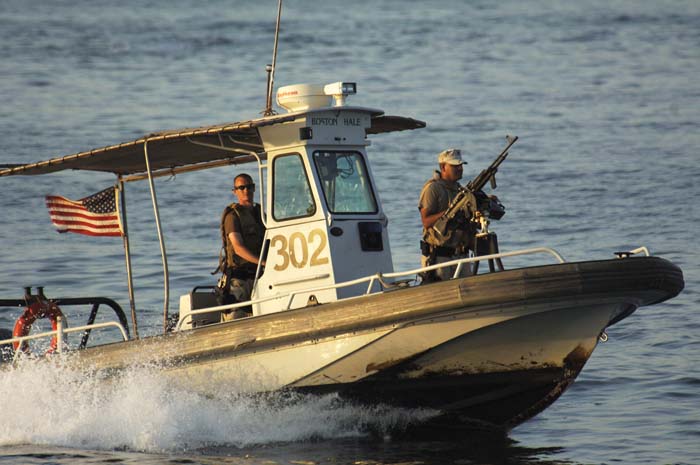
Well there is. US Ordnance manufactures top quality, MILSPEC parts under a US government contract. The problem is in the bins of parts the Navy currently has. They’re mismatched, old parts from some of the first models up to the E3s. What most don’t realize is that those top covers and a lot of other parts are not interchangeable. They mess up what we call ‘the timing’ of the weapon system and cause it to malfunction. So now you have individuals who may or may not be educated on those exact parts and they’re taking these components, interchanging them, and consequently it decreases the reliability of the weapon system.
Steve Renz: One of the biggest things that really forced us to educate ourselves on the 60 was that no two of the Navy’s guns had the exact same parts and pieces. There were different bolt plugs, different buttstocks, barrel configurations, all kinds of different parts and pieces on the ‘same weapon.’ So it forced us to do a lot of research. And what we found was when we started to do some inspections on some of the different ships and different units is the Gunners Mates and Armorers had no idea about the Product Improvement Program from back in the 1960s. There were receivers that had obviously never even gone through PIP (Product Improvement Program upgrade). There appeared to be little to no subject matter expertise on the weapons system and we wanted to help fix that.
We needed to know what some potential problems are if you have a basic M60 that’s running components from different models including the MK43. So as a private company we were able to take a lot of these different parts and pieces, mismatch them, throw ‘em into a gun, run it and see what the problems were. And we found there were some significant problems. This resulted in simple malfunctions and stoppages to complete weapon failure in some cases.
STS Arrives on Station
SAR: How did STS get involved with the Navy’s M60 situation?
Renz: I think a lot of that happened around the 2000 – 2001 time frame when we started doing training for the Mk43 with the Submarine Squadron Support Unit (SSSU) command which is now called NSSU
McClellan: SSSU was the first unit that came to us. This is after they went to the SEAL Teams at Little Creek Amphibious Base, Virginia, and said, ‘Hey, we have all these MK43s like yours but our guys don’t know how to use them.’

The SEAL Teams basically said, ‘We know these guys at Special Tactical Services, call them.’ So they came to us to learn all about the MK43. Building on my SEAL Team background (Team Eight from 1990 to 1998), STS put together a program built from the same principle mechanics that I had implemented back then as an Assault Cell instructor focusing on weapons manipulation and tailored it to what we thought would work for the fleet Sailors who operate the weapon alone in a watch duty station or for any machine gunner for that matter.
We started training the Navy with the MK43 guns and ammunition they had – shooting a thousand rounds per Sailor. But when you start putting that kind of volume through a machine gun it’ll break. Doesn’t matter if it’s a 60, a 240 or a .50, eventually it’ll break.
This is when we started finding about the support that could or could not be provided to the Sailors. They weren’t getting the parts, and the guns were broken.
At the same time we started thinking, these are their wartime guns with so many rounds through ‘em! This is ridiculous. They ought to have training guns that they can beat up and break. We got a line to Saco Defense but they referred us to the new owners at General Dynamics (GD). GD wouldn’t touch us unless we were buying hundreds if not thousands of parts. ‘You want twenty firing pins? Yeah. Call us when you want twenty thousand firing pins.’ So they wouldn’t have anything to do with us either.
Alliance with US Ordnance
McClellan: GD had been extremely reluctant to tell us but I complained enough to them that eventually they told us about US Ordnance, which had bought the M60’s manufacturing rights, technical data package and all the tooling. Once we found out about US Ordnance it was ‘Game On!’ Now we had a source for current parts manufactured to MIL-SPEC (military specification) in the United States of America. This enabled us to fix the Sailors’ guns with the correct components.

Later, we told US Ordnance that we would like the opportunity to come out there and show them the training program we had been putting together. We want you to tell us from a manufacturer’s perspective if there’s anything wrong with the course. So Steve Renz and I flew out to Reno, Nevada, met with Norm Justice and some of the other guys, and taught them our Navy machine gun course. They had a few things for us that were constructive criticism but overall their opinion was, ‘The course is incredible,’ and they sponsored us as their exclusive trainers.
As we went down the path with this they started supporting us with everything we needed. They were fantastic to us and the troops. Also, they were probably one of the most receptive companies I’ve ever seen to constructive criticism. We would call them up and say, ‘Hey, these roller cams keep breaking.’ They’d say, ‘Send us every roller cam that breaks.’ So we would do a round count and we would send it to them. And what was amazing about US Ordnance is they took that data, they looked at their metallurgies and data provided, and they listened to everything we told them and they built a better machine gun.
SAR: So MIL-SPEC wasn’t enough? US Ordnance went beyond that?
McClellan: Well, not exactly, and they could explain it more accurately; but as the Viet Nam war wound down and the M60 support and sustainment transitioned to peacetime, various spare parts contracts were bid out to the lowest bidder. Quality suffered and substandard parts flooded the system. The M60 was not alone in this and as a result several revisions were made in the federal purchasing code to protect small arms manufacturing companies with respect to bolts, barrels, and receivers. But the damage had already been done. The system was flooded with substandard and outdated M60 spare parts.
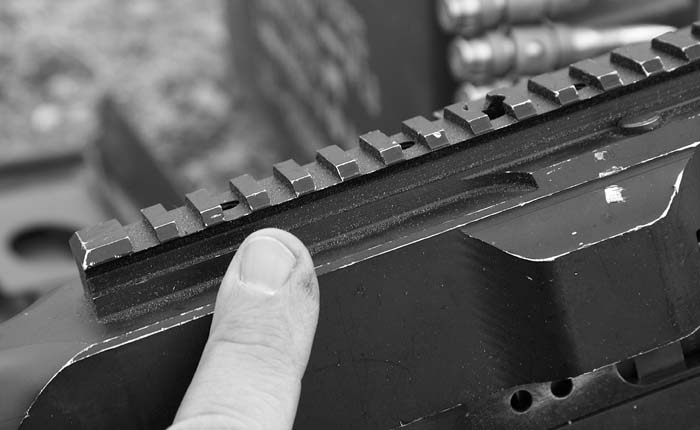
Once US Ordnance got the M60 under their roof they were able to control both ends of the spectrum using only newly manufactured parts on their weapon system. If there was a problem with a part they could find out where the failures were. If the rollers on the actuator cam assemblies were breaking, they stopped outsourcing with that supplier or they held them to a tighter tolerance or material specification so that it matched the print and it worked with the other internal components as the system was designed.
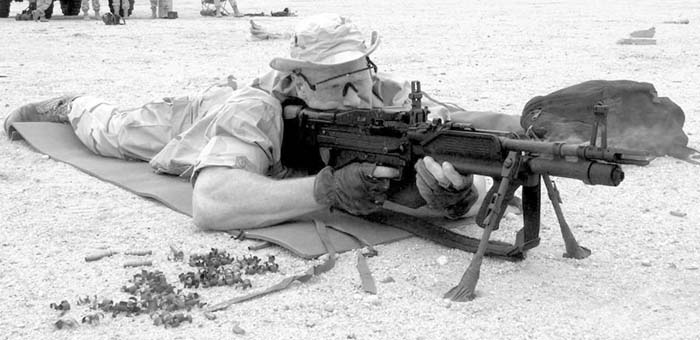
By The Book
SAR: We understand that STS prepared a highly detailed chart that specifies the right parts for each variation of the M60. Is that institutionalized back through Navy channels?
McClellan: Yes, we gave it to them. But because everyone assumed the 240 would replace the 60 by now it was never implemented.
Renz: That’s one of the big things with this current CSWI (Crew Served Weapon Instructor) Program that STS assisted in developing for the Navy. Those guys are going to be instructors so they’re educated on it. We want them to be able to go back and work on the four guns they’re going to come across in the Navy system; the original M60, the M60E3, or MK43, and some Deltas (aircraft guns with spade grips) out there in the Air Wings.
MK43 Conversion Kits
SAR: What came next?
McClellan: We went forward with US Ordnance to NAVSEA Crane and tried to get them to support doing a remanufacturing process. To at least take the new US Ordnance parts and send out the A and B type kits to have the guns rebuilt so they were functional in a combat capacity similar to what was done for the SEAL Teams. That seemed to fall on deaf ears and frustrated the hell out of us.
Renz: A lot of the guys who come through our course, or see the videos, want the conversion kit for the MK43. This is really about a five minute project that costs just around forty five hundred dollars: a lot cheaper than a twelve thousand dollar FN MK48. That’s been our argument. You’ve got so many of these M60 receivers that are still in the system. For $4,500 per weapon system you can turn it into the MK43.
850 Round Bursts
SAR: Tell us about that amazing video on YouTube of the MK43 firing a continuous 850 round burst.
McClellan: I think everyone except US Ordnance and STS laid claim to that video, but yes, we did the first run of those 850 plus round endurance test.
As we went through the parts on the gun and US Ordnance fixed what was broken, they started making operational changes based on some of our recommendations and some of theirs. About then I found this article that talked about Army testing at Aberdeen Proving Ground in the 1990s. Test results for MRBF (mean rounds between failures) were quoted as very good on the FN MAG 58 – the Army M240 – and very bad on Saco’s M60E3. They said the mean rounds between stoppages (MRBS) for sustained rate burst fire and normal operation on the MAG was 2,962 and MRBF was 6,442. On the M60 the MRBS was a mere 846 and the MRBF was 1,699.
The point was that we had to prove that these old MRBS and MRBF figures didn’t apply to US Ord’s new MK43s or for that matter any correctly assembled version. The Army said the MRBS was 846 rounds so we decided to test that theory and demonstrate a continuous burst of 850 rounds.
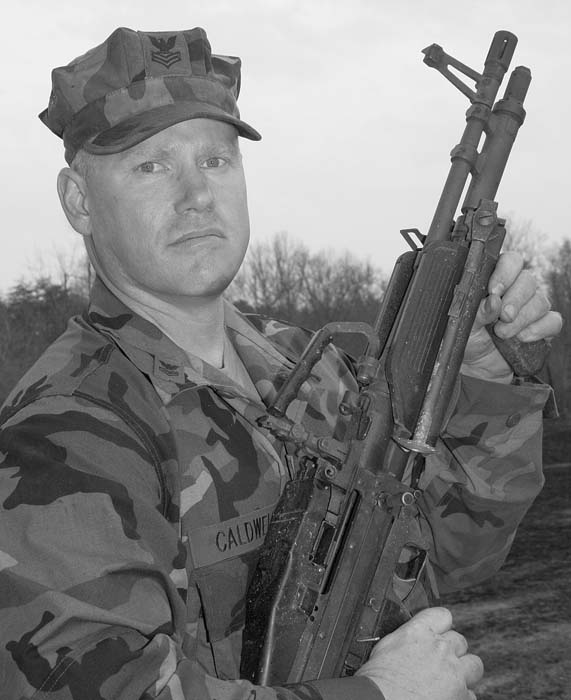
We called up Curtis Debord, and asked, ‘If I linked 850 rounds and pulled the trigger one time would the light and short Commando barrel take it?’ They gave it some thought and said no. Based on the temperature rise of about one and a half degree per bullet, they estimated failure would occur at something like 700-800 rounds as the barrel material becomes compromised at temperatures above 1,000 degrees
I told Curtis that to ‘myth bust’ the stated MRBS we need a barrel that can do more than 850 rounds. Think about it – most special operations guys don’t carry a spare barrel. A SEAL Team operators average load out is 600 plus rounds and the old ‘Predator Packs’ could hold 800 to a thousand rounds. Also, most ‘H-Gear/LBE’ guys (infantry grunts) carry around 300 rounds plus a few hundred more carried by those in the squad.
So we wanted to shoot 850 rounds through one barrel in one continuous burst. But how do you do that? The answer was to take a heavy barrel and chop it down and flute it. That way it had the original hard sight on it, it’s shorter, it’s a little bit lighter and it has more surface area for the cooling. So US Ord built one … and as soon as we got it we pushed it to see what it would do, and it worked at least two times for 850+ rounds. Then we did some 600 rounders for Special Forces groups and others. Several on the same barrel until eventually the barrel bulged a little bit. ‘Hey that doesn’t look right,’ so we sent it back to US Ordnance.
The outside contour on the ‘Shorty’ barrel has an enlarged profile where the Stellite liner ends and the hard chromed barrel begins. This strengthens the intersection of the Stellite liner with the barrel and this is where the barrel first bulged after repeated continuous bursts. So US Ordnance adjusted their barrel contours.
Then, assisting US Ordnance at the 2003 Armed Forces Journal (AFJ) Shootout in North Carolina, we were ready to go public with the 850 round burst. This was a production US Ordnance Mk43 that AFJ evaluators had been shooting all day. When AFJ evaluators came up we’d hand over 100 round belts and let them shoot the hell out of that gun. And at the end of the day, we didn’t clean it or anything. All we did was add a whole bunch more CLP on it in preparation for the 850 round endurance test that would be recorded on video.
FN set up on the Known Distance (KD) Range that day because they were demonstrating several other products that were not suitable for the carbine range. We have not tried it but I am not sure that a M240 chrome lined barrel could sustain 850 rounds continuous.
But it still goes back to the MRBS. What we were saying is ‘let’s call a spade a spade’. Put the weapon on the line and let’s do it.’ So I fed 850 rounds of ammunition to ensure there were no binding issues with the stacked 850 rounds and we asked one of the evaluators, Jerry Hurd, to shoot it; a guy who’d been through our training. We wanted somebody we knew would not let off the trigger and could hold the gun on target safely. So Jerry got down and he pulled the trigger and held it down for 850 rounds. And the demonstration went flawless.
SAR: Even after long lines of people had fired a hundred rounds each.
Renz: It was probably close to four thousand rounds through it earlier that day.
A funny thing happened during the 850 round burst. A friend of ours was over on the KD range. When the gun kicked off everyone there just stopped and listened as it chugged and chugged away for what seemed like forever. He said that when it ended everybody was like, ‘Damn!’ The whole idea was to beat that 846 rounds and everyone knew that it worked. It was a pretty bold statement and it was caught on video.
(Editor’s Note: The video recording of this remarkable demonstration has achieved something of a cult status with tens of thousands of viewings on YouTube and other sites. See the resource listing at the end of this feature.)
MK43 Mod 1 Team
SAR: You’ve got a MK43 Mod 1 right here in the conference room. How about walking us through the significant changes that STS and US Ordnance have collaborated on in these weapons.
McClellan: It was clear to us that if they’re this receptive we need to give them some other thoughts and ideas. David Delp, a design engineer at US Ordnance, had several ideas that paralleled some of ours so I would be careful on taking too much credit.
Renz: One of the big things we saw was the military’s obviously going to different types of optics, lasers, pistol grips, everything else, and needed a place to attach ‘em. We went in and I think they were already working on this top cover with the integral rail. We asked, ‘Why don’t you put rails on the front end of the gun?’
So Delp designed the new forend with the rails up front, but we found out it wouldn’t fit some of the Navy’s mounts, like the MK82 with two attachment points. We took a Dremel tool and cut it out, and we would take pictures and send it to ‘em and say, ‘Hey, you need to open this up or it won’t fit on the old gunner shield and some of the other mounting systems’ and they did.
McClellan: These takedown pins right here were designed by Mark Pierson, who now works for STS. We asked US Ord to do a knurled version for the top cover. They were knurled on both sides so you could pull ‘em apart easier.
We asked them to implement the circular aperture (rear sight) on all the guns and were surprised to find out it was already standard on all new production guns.
Another of our other recommendations they’re playing around with is a larger charging handle. One that’s thicker so you can get a better grasp on it.
We talked about the screw on the cocking handle. Pierson started using an aircraft screw because the cocking handle retainer screw kept coming off under vibration. Based on this feedback and feedback from their international customers, US Ordnance redesigned their cocking handle retaining screw with a Teflon insert to keep it from backing out. So US Ord was not only fixing the things that break, they were listening to the operator’s perspective, based on thousands and thousands of rounds with these Sailors and their customers around the world.
We did the new carrying handle that’s on the barrel, going through three or four different versions so it didn’t block the sight. We actually built up JB Weld on the front end of these and mailed ‘em off to US Ord and they adjusted them.
Now US Ordnance came up with the nice hard plate that mounts to the receiver to hold the ammunition (assault bandoleer) to the side. Which is still one of the biggest problems with the 240 – you can’t mount a hundred rounds of ammunition physically to the side of a 240.
SAR: But that assault pack hanger dates back to Vietnam.
McClellan: Actually, it was attached to the feed tray. Problem was, in order to clear malfunctions, you had to lift up to 6.5 pounds of ammo with it. US Ordnance attached it to where the ammo mounts to the receiver and you can easily lift up the feed tray now.
One of the things was this link port, a lot of times the links will sit up on top or this will hit ‘em and knock ‘em down in the receiver. We were looking to get rid of this piece so you could lay the ammo on quicker and not have other problems. So we took a hacksaw and cut the top part off, but that reduced the rigidity. So US Ordnance is looking at building this piece into the top cover.
People always ask about the bolt locking lugs and why shavings would come off them. That’s normal for a Sixty but most people don’t like to see that. US Ordnance is changing the metallurgies between the barrel extension and the bolt locking lugs and have corrected that issue.
Man Portable Medium MGs
SAR: What interaction has there been between STS and other military services related to machine gun training?
McClellan: We’ve taught USMC units all over the country, some Coast Guard and the US Army Special Operations Command came to us and we ran a course for Special Forces guys at Fort Bragg, North Carolina. They know all the foreign weapons, they know all the guns. So we did an in-field armorers and weapons analysis course for them. This afforded the opportunity to evaluate the MK43 and they wanted to talk about the M60 and some of the improvements that were being made because the Army was saying, ‘Maybe we should look at this weapon again for dismounted applications.’
SAR: Well how about what recently happened with the 101st Airborne? They were using (US Ord M60E4/MK43s) in Iraq and apparently loved it. US Ordnance sent SAR some enthusiastic emails and a couple of pictures of the gun in combat use in Iraq that were forwarded to them from an officer in the division’s 3rd Special Troops Battalion.
McClellan: It’s unlikely that the Army will do anything like that for other infantry units – maybe for the Rangers or Special Forces. But we’ve resigned ourselves to the fact that a lightened and chopped 240 will be the next big thing here. But right now this (MK43 Mod 1) exists, it’s lighter, it’s less expensive, and it works.
Everyone’s realizing the 240 is too big for dismounted missions. There’s no ‘A gunner’ (assistant) anymore to operate under the ‘crew-served’ application. Soliders and Marines operating the weapon system themselves today and the M240 is too big for these types of dismounted applications. Just ask any forward deployed service member using these weapons.
The proof of that is FN, responding to a USSOCOM requirement, built the MK48. This is FN’s 7.62mm version of the MK46, which was basically an upsized M249 SAW; in our opinion a 5.56 frame beefed up for 7.62. From SEAL Team evaluations in the beginning, and depending on the person you talk with now, they’re having problems with the gun.
There’s been talk of a 240 ‘shorty,’ where they’re scaling down a 240 (M240E6/KSP58). This seems to be a more logical approach and same thing they did with the M60 when they built the E3 and the Mk43.
Our argument the whole time has been the Mk43 already exists, it’s already in the system. You put the modification kit out through the remanufacturing process, and you have your shorter, lighter machine gun.
War in Cyberspace
McClellan: I was making the M60 argument online in tactical forums with a bunch of SEAL Team guys and others, going back and forth about the 60s and other weapons. So I said, ‘Alright, enough of this cyber chat, let’s go to the range.’ At the range, I showed them the weapon system, we put the conversion kit on one of their weapons, shot it and ran another 850-round burst. Needless to say we established new ground and a mutual respect for the weapon system.
Another item was the published weights for the M240 machine gun. We put a 240 on a scale and it wasn’t even close to what the military manuals stated. So we were trying to figure out how did they get the weight? Well, it appears the M240 receiver weighs that much – not the M240 with the barrel, top cover, etc. In the end, the published weights that we have seen are a bit confusing.
So we weighed a M60 receiver then the receiver with each different type of barrel, every different configuration we could come up with, rounding everything off to the nearest half pound. That way when people would say, ‘Well yeah, but it’s heavier than a 240,’ we ask, ‘What configuration is your 240 in?’ The bottom line is a modern Mk43 is lighter than a M240 and comparable to a Mk48
We went around and ‘round and it kept fueling our fire, it was a good time and a great learning experience. We have a high level of professional respect for anyone involved in providing quality products to the troops.
Conclusion
SAR: In the meantime, there are a whole lot of M60s out there and they need to work right.
McClellan: I’ve talked to units within the last couple of weeks that are getting guns given to them today to go to war and they are M60s!
The sad part is that an old combat proven American made work horse is on her way out. Like the M2HB, she’s been around for a long time, seen a lot of wars and killed a lot of bad guys. But the deal had already been done; the US military was determined to replace the 60. By 2003 she was on her way out, there was no changing the Government’s mind. I was the last person you’d have heard say that eight years ago, but the writing’s on the wall.
Evolution of the M60
By Robert Bruce
The light and handy 7.62mm NATO caliber M60 General Purpose Machine Gun was developed by the US Army in the aftermath of WWII and fielded in 1957. A departure from traditionally machined heavy steel, it could be made cheap and fast on a stamped sheet metal receiver.
Determined to replace all its Browning-designed M1919 series guns, the Army began a series of modifications to the basic M60. The M60D came first, a helicopter door gun characterized by spade grips and prominent ring sight. The solenoid-fired M60E2 was developed about the same time, a coaxial gun for tanks and external mounting on helicopter gunships.
“PIP” (Product Improvement Program) parts upgrades were applied along the way to address certain design and performance deficiencies.
The M60E3 followed, dropping five pounds in a major overhaul demanded by the Marine Corps. The weight loss unfortunately came with poor durability and reduced performance.
Navy SEALs liked their custom chopped regular M60s but the troubled E3 wasn’t up to the job. Long time M60 manufacturer Saco Defense began delivering a retrofit parts package – the M60E4 – in 1994, receiving the Navy designation MK43 Mod 0.
Still reasonably light and somewhat more reliable and durable than the despised E3, SEAL Team MK43s can be recognized by a distinctive “duckbill” flash suppressor and a positive lock gas cylinder extension that is stubbier and thicker.
After US Ordnance acquired exclusive manufacturing rights to all M60 series guns in 2000, their reliability and durability increased tremendously. However, by this time the US Army – eventually to be followed by the rest of the Armed Forces – had made an irreversible decision to phase out Sixties in favor of the Belgian designed M240 series. The US Navy is the M60’s last major user but all of these are being replaced as quickly as M240s are delivered by FN Manufacturing.
The MK43 Mod 1 is US Ordnance’s latest version of the SEAL Team classic Sixty, readily identified by an integral accessory mounting rail on the feed cover and three more on a redesigned forearm. A retrofit parts kit is available from US Ordnance that will make any serviceable M60 receiver into this light, short, versatile, and powerful one-man machine gun.
Find Out More
US Ordnance, Inc.: www.usord.com
Special Tactical Services, LLC: www.spectacserv.com
- STS website has a link to the letter “The Battle Proven M60”
- STS website has a link to the Washington Times news story “Rummy asked to rescue Rambo’s favorite gun.”
- STS website has a link to the 850 round demonstration video (also seen on www.youtube.com – search “M60 850 rounds” )
| This article first appeared in Small Arms Review V11N12 (September 2008) |










